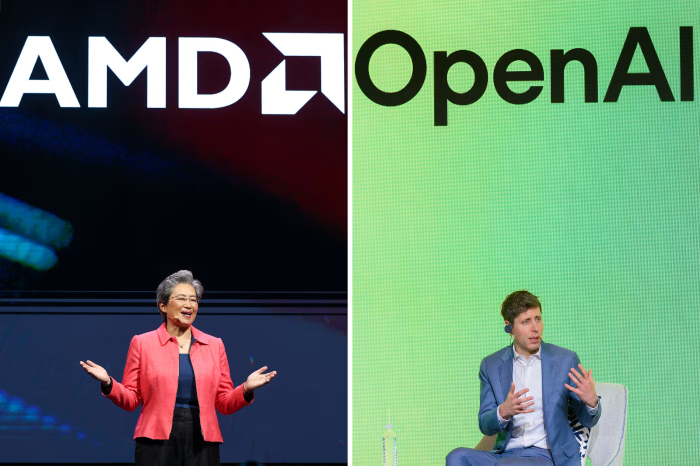OpenAI Secures Historic Partnerships with Tech Giants
OpenAI has announced unprecedented computing agreements exceeding $1 trillion with leading technology companies, marking one of the largest infrastructure investments in artificial intelligence history. The partnerships with Nvidia, AMD, Oracle, and Broadcom represent CEO Sam Altman’s ambitious vision for scaling AI capabilities to meet future demand.
Breaking Down the Multi-Billion Dollar Agreements
Nvidia Partnership: $100 Billion Strategic Alliance
The collaboration with Nvidia stands as a cornerstone of OpenAI’s infrastructure strategy. This comprehensive agreement combines equity investment with long-term hardware procurement, positioning Nvidia as OpenAI’s primary strategic partner for compute and networking systems. The deal encompasses the deployment of 10 gigawatts of advanced computing systems, providing the processing power necessary for training next-generation AI models.
AMD Deal Creates New Competitive Dynamics
OpenAI’s agreement with AMD could potentially include a 10% equity stake in the semiconductor manufacturer. The partnership involves deploying 6 gigawatts of GPU capacity across multiple years, diversifying OpenAI’s chip supply chain beyond its traditional reliance on single vendors. Market response was immediate and dramatic, with AMD shares surging over 23% following the announcement.
Oracle Data Center Expansion: $300 Billion Commitment
The five-year contract with Oracle represents one of the largest data center agreements ever signed. OpenAI committed to $300 billion for 4.5 gigawatts of data center infrastructure, providing the physical space and power necessary to house massive computing clusters. This partnership leverages Oracle’s cloud infrastructure expertise and global data center footprint.
Broadcom Chip Design Collaboration
Reports indicate OpenAI secured a $10 billion chip design agreement with Broadcom, suggesting the company may be developing custom silicon optimized specifically for AI workloads. Custom chip development could provide performance advantages and reduce long-term dependency on third-party hardware suppliers.
Total Infrastructure Investment Approaches $850 Billion
Across multiple sites and partnerships involving Oracle, Nvidia, and SoftBank, the combined computing buildouts total approximately $850 billion. Sam Altman has publicly stated that OpenAI anticipates spending trillions of dollars over time to develop the infrastructure required for advanced AI services.
Why OpenAI Needs This Massive Computing Power
Training Advanced AI Models
Modern large language models and multimodal AI systems require enormous computational resources during training phases. Each successive generation of AI models demands exponentially more processing power, with frontier models requiring thousands of specialized GPUs running continuously for months.
Serving Millions of Users
Beyond training, serving AI models to millions of daily users requires substantial inference infrastructure. As ChatGPT and other OpenAI products scale globally, the company needs computing capacity to deliver fast, reliable responses at massive scale.
Research and Development
Continued AI research requires dedicated computing resources for experimentation, testing new architectures, and exploring novel approaches to artificial intelligence development.
Market Implications and Industry Analysis
Circular Investment Patterns Raise Questions
Some analysts have noted the interconnected nature of these deals, with Nvidia investing in OpenAI, which purchases from Oracle, which in turn buys chips from Nvidia. This circular flow of capital has prompted discussions about whether the AI infrastructure boom represents sustainable growth or bubble conditions.
Competition Heating Up
OpenAI’s massive infrastructure investments signal an escalating AI arms race. Competitors, including Google, Meta, Microsoft, and Amazon, are similarly investing billions in computing capacity, creating unprecedented demand for chips, data centers, and energy resources.
Economic Impact on Tech Sector
These deals represent significant revenue opportunities for semiconductor manufacturers, cloud providers, and data center operators. The investments could reshape supply chains and create new bottlenecks in specialized hardware production.
Energy and Sustainability Considerations
Deploying over 20 gigawatts of computing capacity raises important questions about energy consumption and environmental impact. Each gigawatt requires roughly enough electricity to power a major city, highlighting the need for sustainable energy solutions to support AI infrastructure growth.
Future of AI Infrastructure Investment
Altman’s willingness to commit trillions of dollars reflects a belief that artificial general intelligence (AGI) or highly advanced AI systems will require computing resources far beyond current capabilities. The investments suggest OpenAI is preparing for AI systems that may be orders of magnitude more complex than today’s models.
What This Means for AI Development
Accelerated Timeline for Advanced AI
With secured computing capacity, OpenAI can pursue more ambitious research projects without infrastructure constraints limiting progress. This could accelerate development timelines for next-generation AI systems.
Competitive Moat Through Infrastructure
By locking in long-term supply agreements, OpenAI creates a competitive advantage through guaranteed access to scarce computing resources, potentially making it harder for smaller competitors to access necessary hardware.
Path to AGI Requires Massive Scale
These investments underscore the hypothesis that achieving artificial general intelligence requires not just algorithmic breakthroughs but also unprecedented computational scale.
Conclusion: Betting Big on AI’s Future
OpenAI’s trillion-dollar computing deals represent the largest bet ever placed on artificial intelligence infrastructure. Whether this massive investment pays off depends on continued AI advancement, sustained user demand, and the ability to monetize increasingly capable AI systems. The partnerships with Nvidia, AMD, Oracle, and Broadcom position OpenAI to lead the next phase of AI development, though questions remain about market sustainability and the ultimate ceiling of AI capabilities.
As the AI industry enters this new era of infrastructure-scale investment, OpenAI’s bold strategy will likely influence how competitors, investors, and policymakers think about the resources required to develop transformative artificial intelligence technologies.
